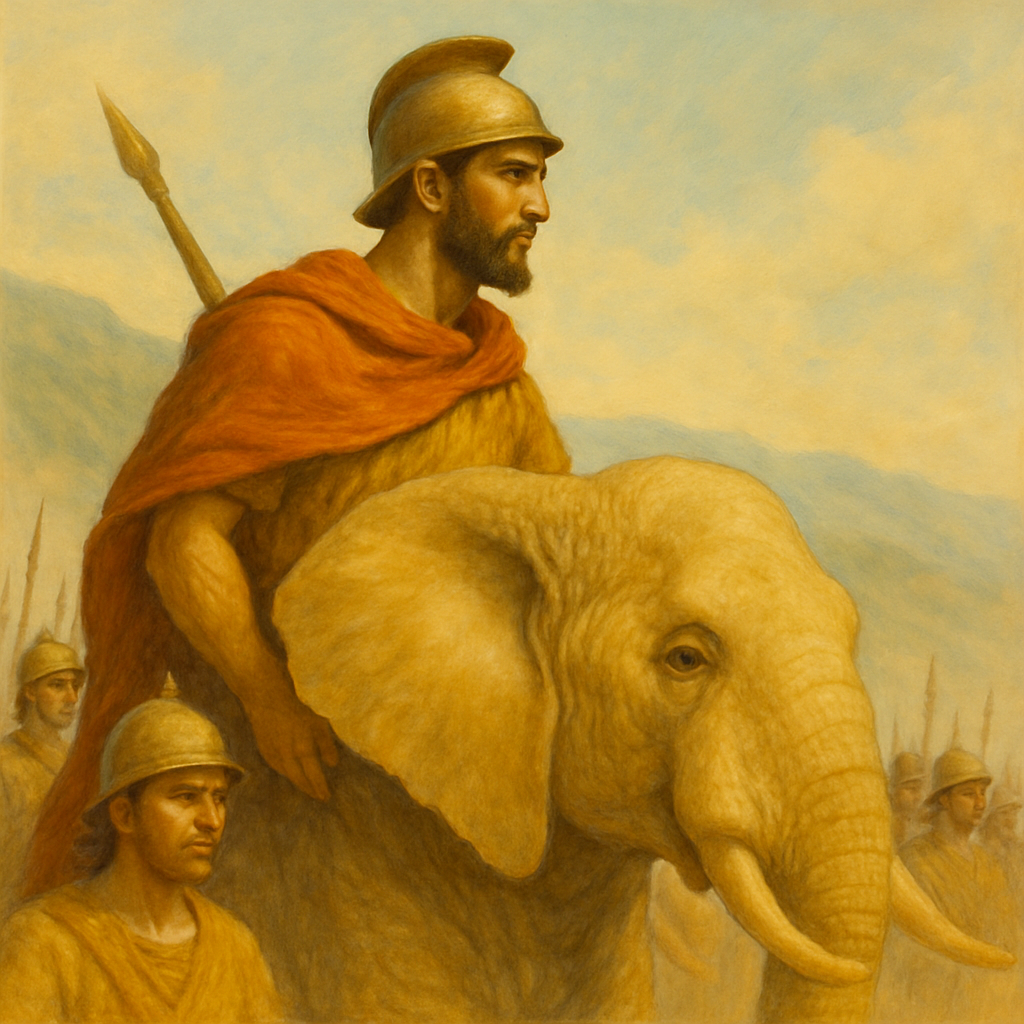Hannibal Barca

Rome's Greatest Enemy
Step into the world of Hannibal Barca, one of history’s most brilliant commanders, and retrace his campaigns across the Mediterranean. From Carthage to Spain, across the Alps with elephants, and into the heart of Italy, follow his legendary struggle against Rome in a way never experienced before.
This presentation of Hannibal is novel in its integration of narrative and geography. Using the Journey Map platform, Hannibal’s campaigns are woven into an interactive map-based storytelling format, allowing readers to follow his movements across the Mediterranean world. By combining text, images, and maps, the aim is to bring Hannibal’s journeys into sharper focus and to make his story both engaging and accessible in a way that traditional narratives alone cannot.
Available now on the Apple App Store - Coming Soon!
HOW THE APP WORKS
- Follow curated Journeys anchored in geography and history
- Dive into narrative Passages with ancient context and modern insight
- Unlock Supporting Passages for deeper site-specific reflection
- Explore interactively with rich imagery and map-based navigation
WHAT YOU'LL EXPLORE
Discover the sweep of the Second Punic War through Hannibal’s eyes: his daring strategies, epic battles, and relentless march against Rome. Learn how geography, politics, and alliances shaped his campaign, and see how one man nearly changed the course of Western history.
Journeys of Hannibal Barca
- Carthage to Spain: 237 - 219 BCE
- Alpine Invasion of Italy: 218 BCE
- Conquest of Italy: 218 - 216 BCE
- Stuck in the Boot: 216 - 208 BCE
- Rome Takes Iberia: 218 - 206 BCE
- Final Stand in Italy: 208 - 206 BCE
- Battle at Zama: 206 - 195 BCE
- Exile: 195 - 183 BCE
POWERED BY JOURNEY MAPS
Built on the Journey Maps platform — a patent-pending system for immersive geographic storytelling — Hannibal Barca blends narrative, location, and reflection into a living, guided experience of the past.
WHY ITS DIFFERENT
Unlike a book or documentary, this app lets you walk the campaign trail. With map-based navigation, richly illustrated passages, and site-specific reflections, you can follow Hannibal step by step — from the walls of Cartagena to the battlefield of Zama. Journey Maps transforms history into an interactive experience where geography and story come alive together.
ONE-TIME PURCHASE
- No subscriptions
- No ads
- Own the full experience — forever
Privacy Policy
This app does not record, store or communicate off-device user data of any kind. Should you turn on location services, your position will be estimated and shown to you only, and only when you are within the apps mapped region.
Support
Support is available by email. Contact us at info@athenianodyssey.com
Authors Forward
Only after attempting to chronicle the life of Hannibal does one begin to grasp the scale of the task. His story has been examined, re-examined, and debated for more than two millennia, and no single account can capture the full complexity of his career. One must lean on the work of many others who, across centuries, have scoured the historical and archaeological record to shape their interpretations. Thanks especially to Polybius, writing within living memory of Hannibal’s death, we know a great deal—though even he leaves us with ambiguities that fuel conjecture and controversy, such as the precise route of Hannibal’s fabled crossing of the Alps.
This presentation is novel in its integration of narrative and geography. Using the Journey Map platform, Hannibal’s campaigns are woven into an interactive map-based storytelling format, enabling readers to follow his movements across the Mediterranean world. By combining text, images, and maps, the aim is to bring Hannibal’s journeys into sharper focus and to make his story both engaging and accessible in a way that traditional narratives alone cannot.
The narrative itself draws especially on Patrick Hunt’s extensively researched book Hannibal (Simon & Schuster, 2018), as well as insights from graduate coursework on Hannibal and Ancient European History taught by Dr. Hunt through Stanford University Continuing Studies. I am grateful to Dr. Hunt for his encouragement of this project and for the use of personal photographs gathered during two decades of Hannibalic research in the field.
This work is dedicated to my younger brother Cory, a brilliant and tireless historical researcher, whose presence would surely have advanced this text.
Jess Taylor, Inverness, California, 2025